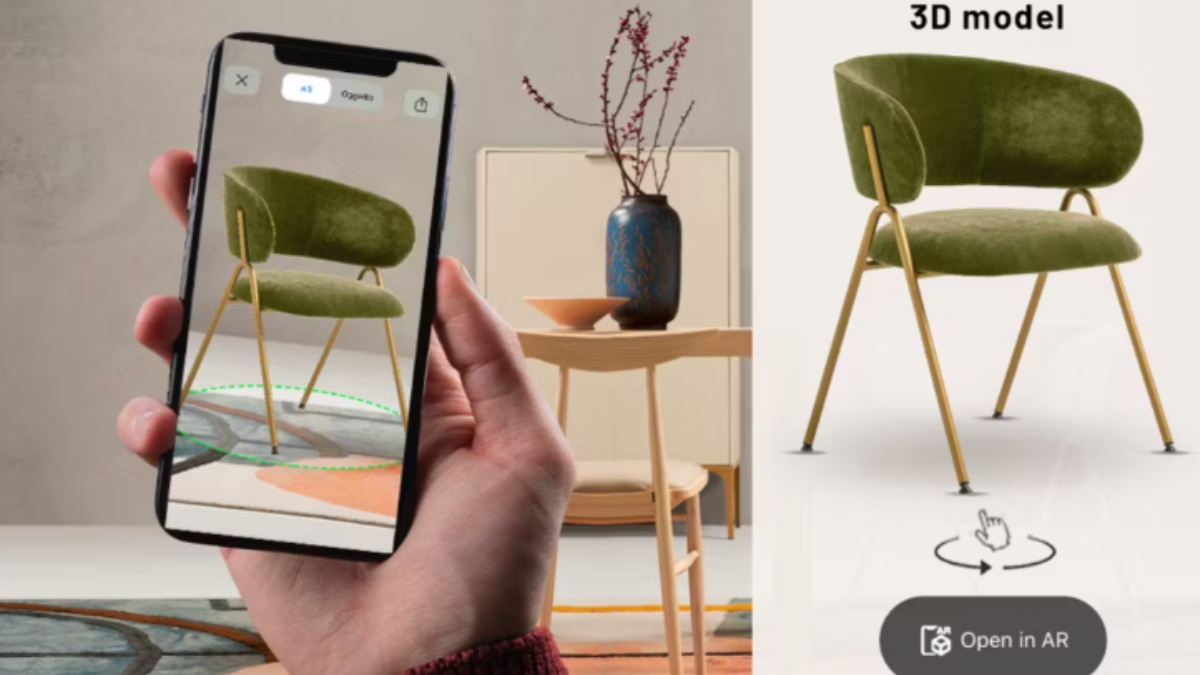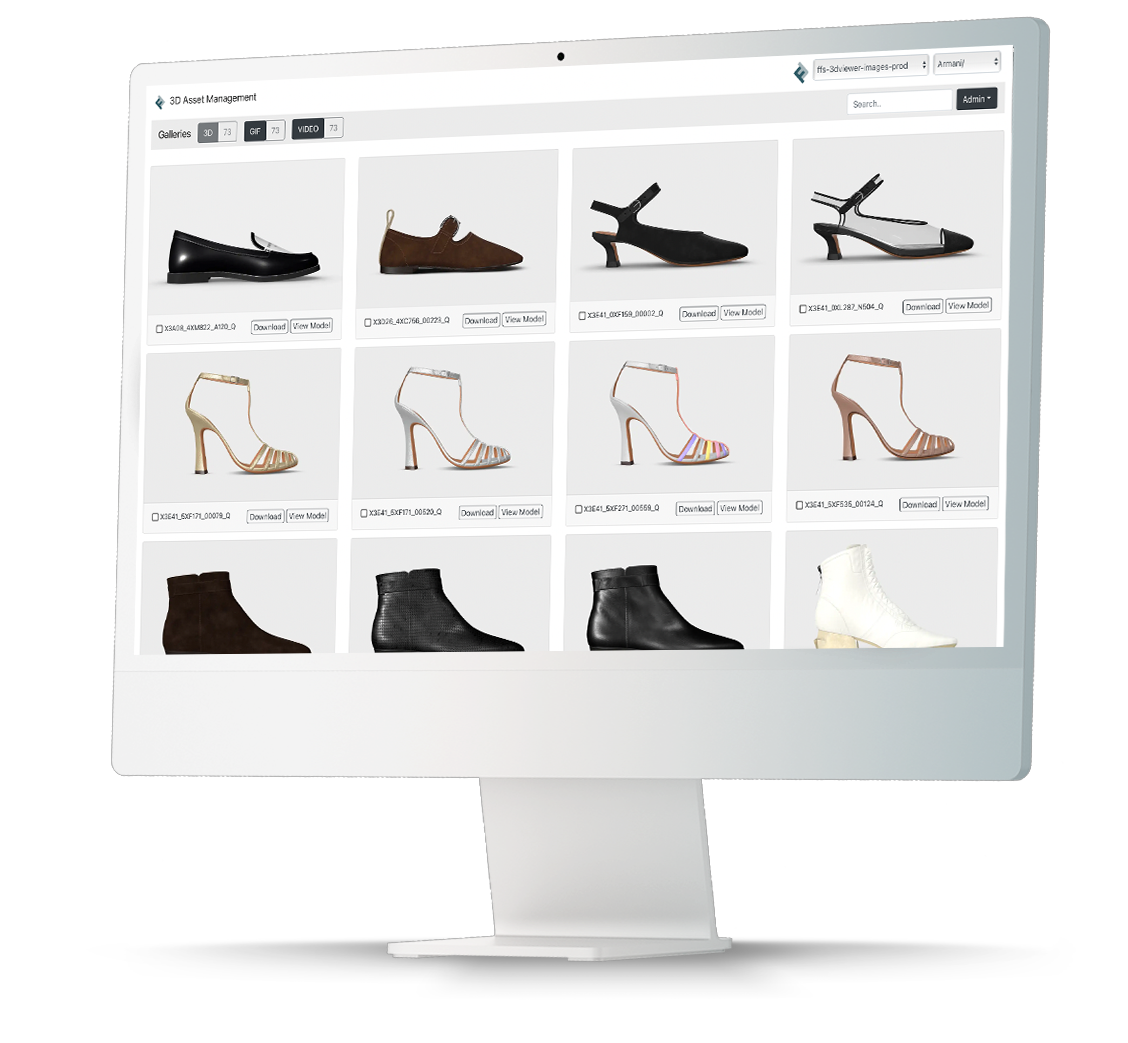In the ever-evolving world of advertising, marketers are continuously seeking innovative ways to engage their target audiences. One of them is definitely related to the immersive world of Augmented Reality. Augmented Reality advertising has emerged as a powerful tool that blends the virtual world with the real one, creating interactive and immersive experiences for consumers.
In this blog post, we’ll explore what is Augmented Reality advertising, how to use it and what are its benefits. We’ll also showcase some of the best AR campaigns that have redefined the way brands connect with their customers.
Starting From the Beginning: What is AR?
Everyone has heard of AR at least once! But what is Augmented Reality really? It’s a technology that changes the appearance of the real world by integrating digital information and items into it. In other words, using AR, you can instantly bring a digital object into a real space.
And no, if you’re wondering, Augmented Reality and Virtual Reality are not the same thing. AR allows you to bring a digital product into a real space, while VR allows you to put yourself or a real product into a digital, non-real space. It’s quite different, but both VR and AR are used in marketing to create immersive experiences.
Let’s focus on AR!
What are AR Marketing and AR Advertising?
AR marketing has witnessed a surge in popularity, and it’s not hard to see why. By leveraging AR, advertisers can add a layer of virtual content to the real world, bringing their products or services to life.
Imagine seeing and experimenting with a digital product in your real space, isn’t it the ultimate shopping experience? That’s why AR advertising campaigns are becoming so popular.
In particular, today one of the most exciting trends in Augmented Reality advertising is its fusion with video. AR-powered videos have become a compelling way to captivate audiences, allowing them to interact with digital elements superimposed on the physical environment.
By allowing customers to interact with digital products and put them into their real spaces, merchants can level up the shopping journey, making the online experience more similar to the physical one (but without the hassle of going out and losing precious time!).
Let’s recap what are the main advantages of using Augmented Reality advertising and marketing for merchants!
Benefits of Using Augmented Reality in Advertising
AR advertising brings an array of benefits to businesses seeking to engage customers on a deeper level:
1. Enhanced User Engagement
AR advertising offers an unparalleled level of interactivity, encouraging users to actively participate in the brand’s story and message. By involving customers in immersive experiences, brands can forge stronger connections and leave a lasting impression. At the same time, customers can interact at a deeper level with products, boosting their interest and engagement with the brand.
2. Personalized Shopping Experiences
AR allows customers to visualize products in their real-life settings before making a purchase. This feature significantly reduces purchase hesitation, as consumers gain confidence in their buying decisions. This is like crafting a hyper-personalized shopping experience, where customers can decide where to visualize products and interact with them, leveraging their real spaces during the process.
3. Boosted Brand Awareness
Implementing Augmented Reality advertising campaigns creates a buzz around the brand, drawing attention from both potential customers and industry peers. Memorable and shareable AR experiences can lead to increased word-of-mouth promotion.
4. Data-Driven Insights
AR technology enables marketers to collect valuable data on consumer behavior and preferences. By analyzing this data, businesses can fine-tune their advertising strategies for better results.
5. Competitive Edge
Setting up AR campaigns sets brands apart from their competitors. Companies that adopt this technology early on can position themselves as innovative leaders in their respective industries, leveraging these immersive technologies to enhance the Customer Experience, boost sales and make customers more satisfied.
How To Use AR Advertising in E-Commerce: Best Applications
Augmented Reality advertising has a profound impact on e-commerce, revolutionizing the way customers shop online. How to use AR and advertising for merchants? Here are the top use cases:
Virtual Try-Ons
AR allows customers to virtually try on products like clothing, accessories, and even makeup. Imagine trying on a pair of glasses or a hat instead of simply seeing it on the screen. Pretty different, right? This feature boosts customer confidence and reduces returns, thereby avoiding the production of samples and enhancing overall customer satisfaction.
Home Visualization
For furniture and home decor brands, AR enables customers to visualize how products will look in their real spaces. This feature eliminates guesswork and facilitates purchasing decisions, also for high-priced items like sofas or canvas.
Live Product Demonstrations
AR empowers businesses to demonstrate complex products and their functionalities in a user-friendly manner. Using Augmented Reality for driving and demonstrating real products could be the perfect ally for assembling products. This enhances understanding and builds trust with potential buyers.
Augmented Product Information
AR can overlay additional product information, reviews, tutorials, and specifications, providing customers with comprehensive details that aid their decision-making process. This could be a great ally in marketing and promotion, giving customers another reason to buy the product.
Gamified Experiences
Incorporating AR games or challenges that are related to products makes shopping more fun and increases customer engagement, all while encouraging customers to spend more time on your platform and interact with your brand.
AR in Action: Top Industries Leading the Way in AR Advertising
Ok, every business can use AR Advertising, but what are the top industries today in this field?
Furniture
Furniture is undoubtedly one of the industries that can benefit the most from the use of Augmented Reality, both in advertising and marketing, and in the online sale of products. Imagine allowing your customers to view tables, paintings, and chairs in their actual living spaces, right at home. Conversion rates increase, returns decrease, and convincing customers to make a purchase becomes as easy as it is in-store!
Beauty
The beauty and makeup world has also become closely tied to AR in recent years. Allowing customers to try on makeup and see what looks best on their own face is the key to boosting sales. This is where Virtual Try-On technology comes into play, enabling customers to test makeup and products in real-time directly from their screen.
Fashion
The fashion industry is also making significant use of AR campaigns. Think about virtual fitting rooms or AR for trying on shoes, hats, and other items. Returns decrease dramatically, and sales become easier, eliminating the need to produce physical samples.
Real-Life Augmented Reality Advertising Examples
Now, let’s delve into some inspiring AR advertising campaigns and case studies that have garnered immense success:
IKEA
In 2017, Ikea got creative and utilized their existing AR technology for a festive Christmas campaign. They cleverly used their popular Ikea Place app to give users a virtual preview of their Christmas trees in the comfort of their own homes.
This innovative idea allowed people to experience the joy of picking out the perfect tree without leaving their living rooms. By combining AR and the holiday spirit, Ikea truly brought the magic of Christmas right to their customers’ fingertips.
H&M
In January 2022, H&M made a splash with their first virtual clothing line. They held a competition asking people to come up with cool names for the virtual clothes. These unique pieces weren’t actually made or sold in stores, but lucky winners got to “try them on” by submitting a photo of themselves. The photos were then jazzed up by talented 3D graphic designers.
Adidas
Adidas, a popular fashion brand, is all about embracing and testing out Virtual Try-On (VTO) technology. In 2019, they blew us away with their iOS app that allowed customers to virtually try on their most iconic sneakers as well as some slick running shoes. Although it couldn’t determine your exact shoe size just yet, the app gave customers a realistic preview of how the shoes would look on their feet.
L’Oréal
L’Oréal’s ModiFace experience revolutionized the world of augmented reality retail, giving users the ability to virtually try on makeup shades and create a full look using products they could actually buy. Their app eliminated the need for trying on different shades one by one, and instead used cutting-edge augmented reality technology to determine the best makeup shades for a user’s skin tone.
L’Oréal’s campaign paved the way for future AR advertising, showing the immense benefits and potential of this exciting and immersive way of shopping for beauty products.
BMW
BMW has really taken Augmented Reality (AR) advertising to the next level with their impressive AR experience. They have created a cool app that lets customers virtually place the sleek BMW i4 or iX into any real-world setting. But that’s not all, folks!
BMW has gone the extra mile by allowing users to actually explore the vehicles in this digital realm. You can open and close the doors, try different exterior paint colors, and even play around with the lighting elements.
Pepsi Max’s Unbelievable Bus Shelter
This campaign surprised and delighted commuters waiting at a bus shelter with jaw-dropping AR visuals, making it one of the most shared and talked-about campaigns of all time.
Sephora
Sephora knows that trying makeup before buying is important, but not everyone is comfortable doing it in-store. That’s why they created an in-store virtual try-on kiosk. Visitors can see how products look on themselves before purchasing. It’s a great way to ensure satisfaction and help customers find the perfect lip color or foundation without any doubts.
National Geographic’s Sharkfest
National Geographic’s Sharkfest campaign leverages augmented reality to provide an incredible experience for users. By scanning an image and granting access to your smartphone’s camera, you can witness a virtual shark cage in your surroundings. By tapping the cage, you are transported into a 360-degree virtual world where you can observe sharks and divers.
Conclusion
Augmented reality advertising has proven to be a game-changer in the marketing landscape, offering unparalleled engagement, personalization, and brand experiences. From e-commerce to gaming, AR continues to redefine how businesses connect with their audiences.
By keeping up with the latest AR marketing trends and leveraging their advantages, brands can unlock new creative possibilities and establish a competitive edge in their industries. But, how can businesses incorporate Augmented Reality into their advertising strategies?
Businesses can incorporate AR into their advertising strategies through mobile apps, interactive displays, social media filters, and AR-powered video content. They can also partner with dedicated AR advertising apps and technology providers, like Zakeke, to create unique and engaging experiences.

VEED
VEED is an online video editing platform that empowers creators to transform their videos with ease. With a team of skilled developers and video editing enthusiasts, VEED is revolutionizing the way people edit and enhance their video content. Through a user-friendly interface and a comprehensive suite of editing tools, VEED enables users to add captivating effects, captions, subtitles, and images to their videos effortlessly.














